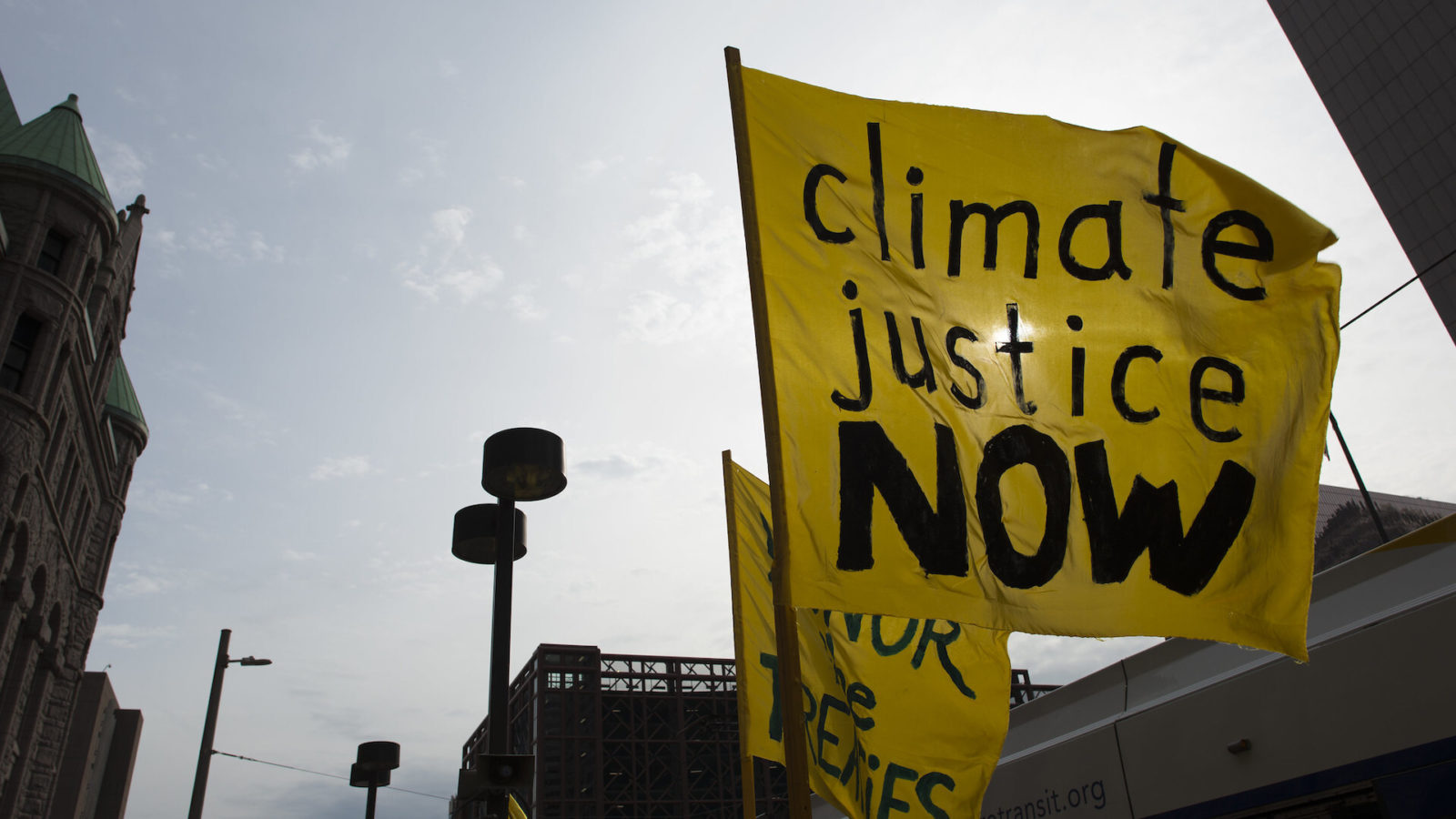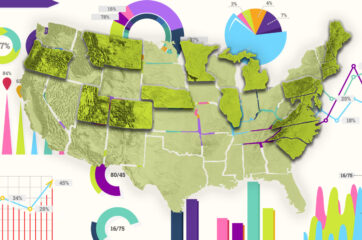This white paper tracks the status and trends of three procedural environmental justice (EJ) policies across 24 U.S. Climate Alliance (“Alliance”) states:
- How each state defines an environmental justice community
- Each state’s environmental justice mapping capabilities
- The status of dedicated environmental justice staff and/or advisory bodies
We find mixed results in the adoption of these policies in Alliance states. In particular:
- Less than half (38 percent) of Alliance states have developed an explicit, measurable definition of an EJ community.
- Half of Alliance states have developed an EJ mapping data tool.
- Fifteen Alliance states (63 percent) have established an EJ advisory body, five of which (21 percent) were established by legislation.
- Eleven Alliance states (46 percent) lack dedicated EJ staff in state agencies.
This analysis suggests that EJ community definitions, mapping tools, and bureaucracies are growing in popularity among Alliance states, but have yet to achieve widespread adoption. While these policies alone do not achieve environmental justice, they are vital procedural steps that signal a government’s commitment to tackling environmental justice in a sophisticated way.
The data for this paper was reviewed in July 2021, and any policy developments since review are not reflected in this paper.
Background
State and local governments persist as important venues for environmental justice (EJ) legislation to address local community needs and priorities. They frequently innovate on environmental and social justice policy at a faster rate than the federal government, and provide existing efforts for federal agencies to learn from.
The U.S. Climate Alliance (“Alliance”), which currently includes 24 member states, is a bipartisan coalition of governors, each of which has committed to:
- Reducing collective net greenhouse gas (GHG) emissions by at least 26–28 percent by 2025 and 50–52 percent by 2030, both below 2005 levels, and collectively achieving overall net-zero GHG emissions no later than 2050.
- Accelerating new and existing policies to reduce GHG pollution, building resilience to the impacts of climate change, and promoting clean energy deployment at the state and federal level.
- Centering equity, environmental justice, and a just economic transition in their efforts to achieve their climate goals and create high-quality jobs.
- Tracking and reporting progress to the global community in appropriate settings, including when the world convenes to take stock of the Paris Agreement.
Concepts such as equity, EJ, and a just economic transition are relatively new additions to the Alliance’s list of explicit commitments. Additionally, EJ policies are highly contextual to local communities, making them more difficult to measure, evaluate, and compare than numerical GHG emissions reduction targets.
Nonetheless, cross-state comparison of efforts to achieve environmental justice are a critical exercise to accelerate change. This white paper contributes to driving change on EJ policies by analyzing a small number of procedural equity policies and identifying model examples for state governments to examine.
We find that EJ community definitions, EJ mapping tools, and EJ bureaucracies are growing in popularity, but have yet to achieve widespread adoption across all Alliance states.
Overview
This study tracks the implementation rate of three procedural EJ policies across Alliance states:
How each state defines an environmental justice community
An environmental justice community refers to populations that are disproportionately impacted by environmental harms due to structural inequities related to their race, income pollution, pollution burdens, and/or additional factors. The exact definition varies by state and may determine how state governments conduct community engagement.
Each state’s environmental justice mapping capabilities
Open mapping tools visualize key data such as the demographics, environmental hazards, and socioeconomic disparities, and can help identify local environmental injustice. They serve as a key tool for government accountability, transparency, and democracy when it comes to data on state EJ disparities.
The status of dedicated environmental justice staff and/or advisory bodies
Environmental justice bureaucracy, such as advisory bodies and dedicated EJ government staff, help bridge the gap between the government and communities by soliciting input and supporting engagement. These personnel may be charged with symbolic, ineffective authority such as non-binding recommendations to the governor, or they may be directly charged with authority, approval, and implementation of EJ policy.
These three policies are not sufficient for redressing environmental injustice in America. They can, however, help build the data, government structure, and transparency required for future EJ solutions, and signal a state government’s commitment to address EJ with the level of sophistication it requires.
This study tracks the occurrence and characteristics of these three policies across 24 Alliance states. The information on each state’s policy was collected through state agency websites, legislative documents, and third-party analysis.
Key Findings
Nine out of 25 Alliance states (38 percent) have explicitly, measurably defined an EJ community.
Many Alliance states still have not established a set of measurable, specific criteria that define where environmental justice communities are in the state.
Explicitly defining EJ communities gives the justice movement leverage in new decision-making arenas. Important political and material decisions, such as representation and community engagement requirements and funding allocations require specific criteria and measurement to ensure they take place equitably. When priority communities are defined, it is easier to make EJ outcomes measurable, actionable, and mandatory for government agencies.
Among the Alliance states, there is variance in what criteria are used to define an EJ community. Six states include a measurement of race or minority status in their definition, whereas eight states include a measurement of income or poverty rates. Many states are a mix of both. However, only two states — California and Washington State — include measures of environmental burdens such as air pollution, health incidence rates, and/or chemical exposure in their explicit EJ community definitions.
Ultimately, states who fail to consider a multitude of factors limit their own ability to effectively define priority communities. Studies find that measures of race, income, and health burden are highly correlated, and the EJ factors in each state are highly contextual. Thus, the public process used to arrive at these definitions is arguably a better measure of policy quality than the definition itself.
Twelve Alliance states (50 percent) have developed a mapping tool to identify EJ factors and burdens.
Mapping tools visualize key EJ indicators, such as demographic information and environmental hazards. These tools increase transparency and allow decision-makers, activists, and residents to identify EJ communities. Half of Alliance states have developed a state mapping tool to identify EJ factors and burdens.
These mapping tools have varying degrees of granularity, typically mapped by census blocks, census block groups, or census tracts. A census block is the smallest geographic area available, whereas a census block group consists of a cluster of blocks. Census tracts are small, relatively permanent statistical subdivisions of a county that typically capture between 1,200 and 8,000 people. Of the twelve Alliance states with their own mapping tool, only two states measure at the census block level.
Some states have all the necessary data available, but have yet to consolidate and democratize this data into an open tool. Massachusetts and Connecticut, for example, both have public detailed maps on what areas of the state qualify as EJ communities, but do not integrate other environmental burdens such as air pollution exposure into the dataset.
The quality of each state’s tool is contextual to the public process used to develop these tools. In Maryland, for example, advocacy from stakeholders led the state to include six additional EJ factors in their mapping tool: asthma emergency room discharges, percent of non-White individuals, proximity to waste treatment and disposal facilities, myocardial infarction discharges, infants with low birth weight, and particulate matter. By seeking feedback and public engagement, states uphold a core principle of environmental justice — stakeholder representation in decision-making.
Fifteen Alliance states (63 percent) have established an EJ advisory body. Thirteen Alliance states (58 percent) have dedicated EJ staff in the executive office.
Following the principles of EJ requires new intention within governance. A state government embodies its priorities in the very bureaucracy it deploys.
EJ advisory bodies tend to be composed of non-government individuals who represent various communities and areas of expertise, and are responsible for making recommendations that are in the interest of EJ communities. They can be a helpful vehicle of representation in arenas of government decision-making that have historically been inaccessible to the public.
Permanent EJ staff members are state employees that implement specific EJ programs, monitor implementation across agencies, facilitate community engagement, and more. Addressing EJ requires dedicated staff and resources to properly engage communities.
Thirteen Alliance states have permanent EJ staff and 14 have established an EJ advisory body. Only five of these advisory bodies were formed through legislation, which is an important measure to safeguard against administration turnover and compel real political involvement. Massachusetts, for example, established a Governor’s Environmental Justice Advisory Council as part of a 2014 executive order, yet such an advisory council has yet to be formed/maintained seven years later. Such a council could be compelled, resourced, and given clear authority via legislation.
There is wide variability in the effectiveness of EJ staff and advisory bodies across Alliance states. The quality of a state EJ bureaucracy is best judged by frontline communities and local actors that are directly subject to these institutions.
Conclusion
We find that the three policies analyzed in this paper — EJ community definitions, mapping capabilities, and EJ bureaucracies — are growing in popularity among Alliance states. However, they have yet to achieve widespread adoption. The Alliance state’s newfound commitment to equity, a just economic transition, and environmental justice will succeed based on whether they can set up the correct procedural policies to address injustice in a sophisticated way.
There is progress on the horizon. This study only examines policies that have passed, been implemented, and are publicly visible. Many Alliance states have new environmental justice policies under development, which would pass under the radar of this study’s data. Washington State, for example, is undergoing a deep EJ re-structuring across all state agencies that goes well beyond the three policies analyzed in this study.
What is important is that environmental justice is taken seriously as state policy. The Alliance states have historically approached the climate crisis with sophistication and accountability, and that same rigor is required to solve local challenges of environmental racism, income inequality, tribal exploitation, and community exclusion.









